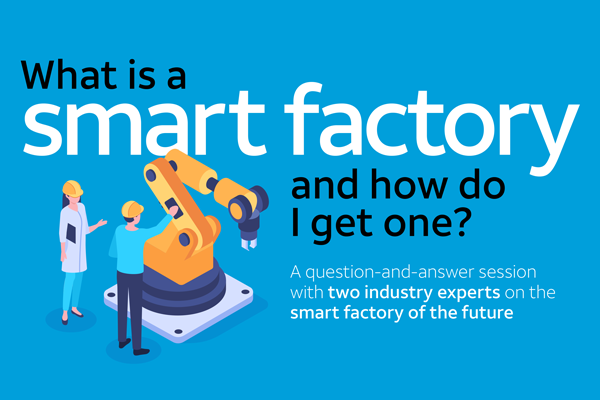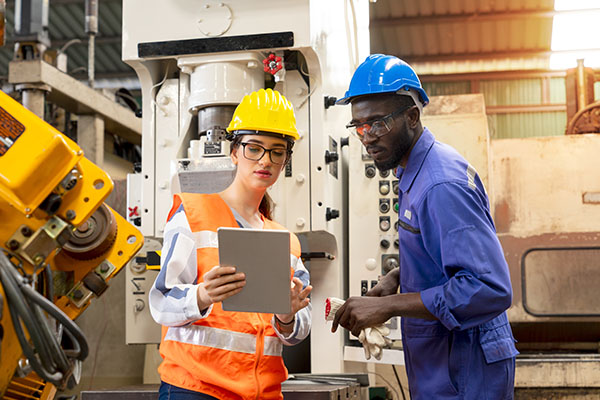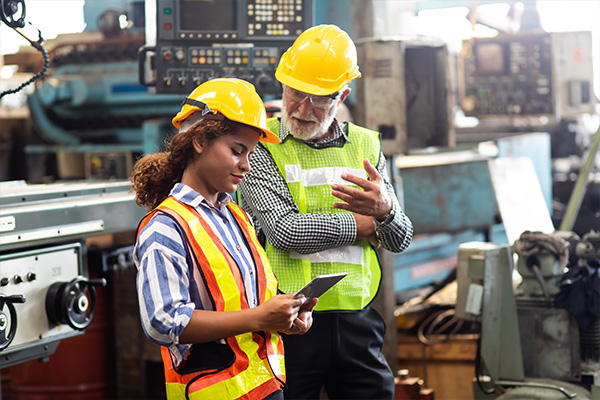What is a smart factory and how do I get one?
Creating and running a smart factory requires smart decisions. We spoke to two AT&T Business experts -- Ande Hazard, VP of Manufacturing Solutions, and Clara Hustad, Assistant VP of Marketing -- and asked them what a smart factory looks like, the challenges in creating one, and which technologies to prioritize as you digitally transform.
Describe your ideal smart factory of the future.
Ande: This will be a connected factory, providing valuable data to help manufacturers make intelligent decisions about how to respond to changes in their market. Through connectivity solutions like IoT, Video Intelligence and 5G, you can use predictive analytics to make informed decisions, forecast demand, and prevent downtime. My ideal factory would also have an effective cybersecurity strategy that extends beyond the factory to remote workers, third-party vendors, and suppliers to help protect vulnerabilities that hackers may target.
Clara: I envision a control center that’s like a movie experience. You can move virtually through your factory floor and adjust settings in real time. So the production floor is immediately responding to purchases or client needs and has insights into inventory, transportation, and sale of goods by location or region.
What are the biggest challenges for those with legacy manufacturing processes and infrastructure?
Clara: For brownfield factories (those with mostly legacy infrastructure, both physical and virtual), upgrading their existing machinery or retro-fitting it to gather insights and data seems to be the toughest. Also, just because you have data doesn’t mean you can act on it. There is a sophistication in how you process and decipher the data.
Ande: Three things: equipment, labor, and supply chain. From a legacy equipment perspective the key is keeping it running consistently and efficiently. On the labor market front, a lack of skilled workers has reached epidemic levels in North America. And regarding the supply chain, its fluctuations have everyone on edge.
Some manufacturers are at the beginning of the digital transformation journey. Where should they consider investing first?
Ande: Most industry leaders are faced with several challenges and unsure of where to begin. I recommend investing in a consulting partner who can help assess and design technology roadmaps to help plan and implement a digital transformation strategy.
Clara: For brownfield factories, it’s getting legacy machinery to “feel” smarter and provide insightful and actionable data points for line employees. For greenfield facilities (new, under construction facilities with custom-fitted technologies), opportunities are endless, but your budget isn’t, so it’s picking and choosing where you’ll see the largest return on your investment. Growing efficiency and reducing complexity for both machinery and team members means more automation. For that you need massive connectivity. So, connectivity infrastructure is a great place to start. Not far behind that is investing in cybersecurity for your infrastructure.




Share
Share this with others